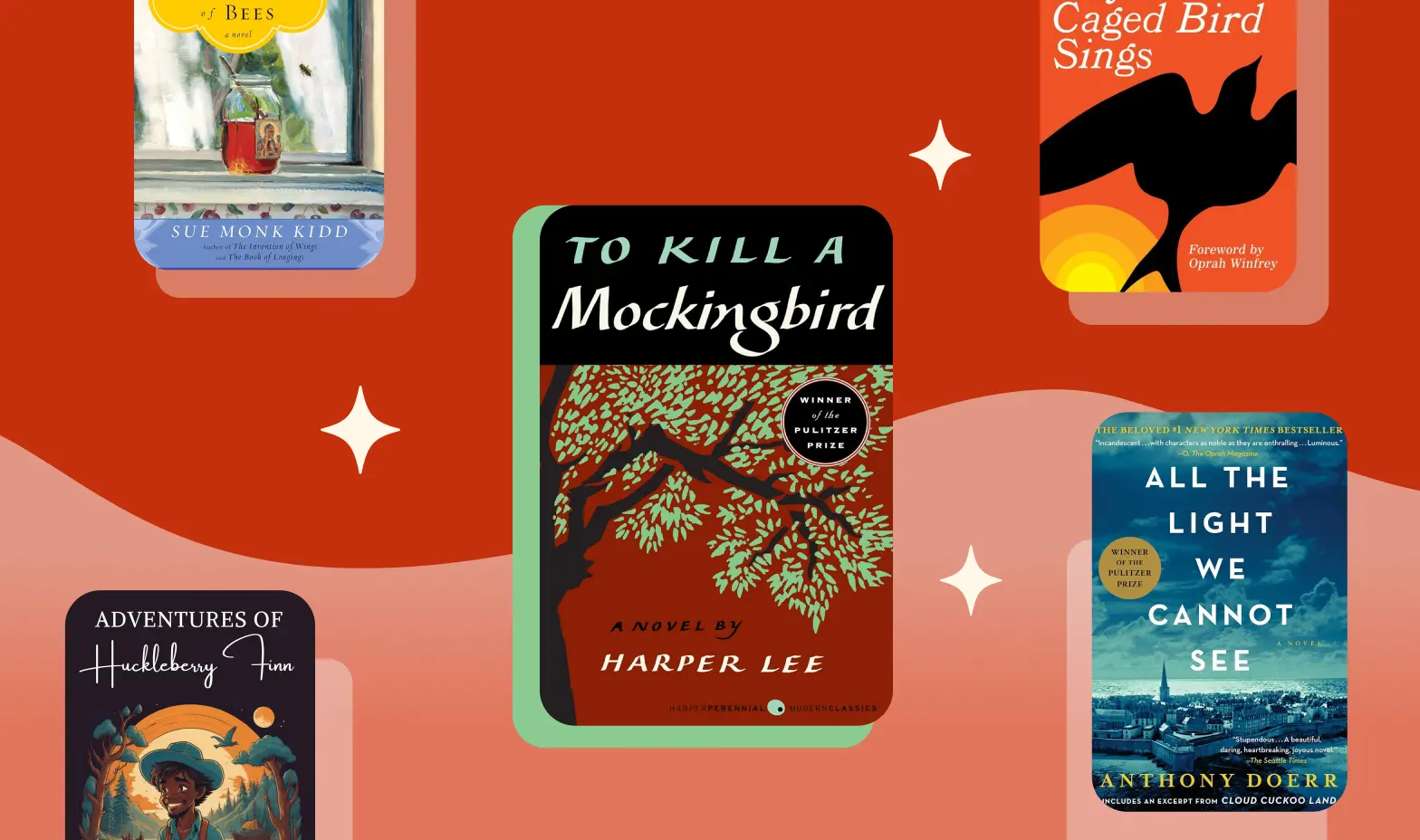They're certainly entitled to think that, and they're entitled to full respect for their opinions... but before I can live with other folks I've got to live with myself. The one thing that doesn't abide by majority rule is a person's conscience.
- Harper Lee
1. Adventures of Huckleberry Finn by Mark Twain
This Mark Twain’s classic book continues the adventures of Tom Sawyer, shifting focus to Huck Finn, a neglected boy raised by an abusive father. One day, a boy escapes a troubled home life to avoid suffering from lousy treatment. He goes on the run, encountering various adventures along the way. At some point, he meets Jim, a slave boy who runs away from his mistress. Huck faces a moral dilemma. Should he adhere to social norms that tell him to return Jim as a "property?" Or should he follow his heart and help the boy who is kind to Huck as no one else has ever been?

Adventures of Huckleberry Finn
2. The Help by Kathryn Stockett
If you want to know more about the experiences of black women in the 1960s, The Help by Katherine Stoker is a must-read for you. The author skillfully combines a poignant story with historical facts. You will learn about the fate of the maids who had to sacrifice their own families to nurture white children, pouring all their love and care into them. Sadly, growing up, these children respond to their caregivers with hostility and arrogance, reflecting the societal prejudice towards blacks. But at some point, one white writer sheds light on the unjust discrimination servants face through her novel.

The Help
3. All the Light We Cannot See by Anthony Doerr
The events of this book are set in the cruel realities of the Second World War. Our main characters are children whose childhood was shattered by Nazi brutality. A little blind French girl, Marie-Laure, fatefully crosses paths with another child — a German boy who is also blinded but by Nazi propaganda. He has an incredible innate talent for technology that the Germans exploit for their own gain. The novel beautifully explores themes of resilience, the impact of war on humanity, and the profound connections that can exist even in the darkest of times.

All the Light We Cannot See
4. I Know Why the Caged Bird Sings by Maya Angelou
Maya Angelou wrote this autobiography about her challenging youth as a black girl. She tells how, from an early age, the child's mind is perplexed when faced with unjustified hostility and aggression. In adolescence, Maya and her family experience various forms of persecution and sometimes even violence. This powerful story resonates deeply with readers who share similar experiences within the black community. The author’s writing style shifts and adapts during the story, showing the world through the eyes of a brave girl coming of age and standing against unfair societal norms.

I Know Why the Caged Bird Sings
5. The Secret Life of Bees by Sue Monk Kidd
The plot revolves around two girls who live under one roof yet have different statuses due to their skin color. The daughter of the despotic mansion owner, Lily is worried about the mysticism surrounding her mother's death. Rosalyn is her dark-skinned servant, who faces societal disfavor for standing up for her rights. Together, they run away from home and settle in the house of beekeeping sisters. There, Lily will reveal the biggest secret hidden within her family.

The Secret Life of Bees
6. The Kite Runner by Khaled Hosseini
In another poignant tale, we meet Amir, an Afghan boy from a privileged background, and his servant, Hassan. Both became close friends and supported each other. However, the demanding father of the quiet and modest Amir began to set the strong and brave Hassan as an example for him. Consumed by jealousy and resentment for the servant, Amir did not even help Hassan when he was being bullied. What awaits the two boys, especially when a brutal war starts to loom on the horizon?

The Kite Runner
Human history has many examples of injustice, discrimination, and cruelty. Awareness and learning from this past is our responsibility if we hope to build a future where everyone feels safe and valued. Authors mentioned in the list are not afraid to address the pain endured by previous generations and deserve recognition as classics worthy of every reader’s attention. Learn more about intolerance in our summary of How to Be an Antiracist.











